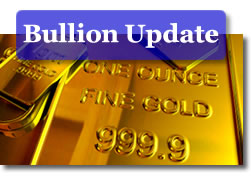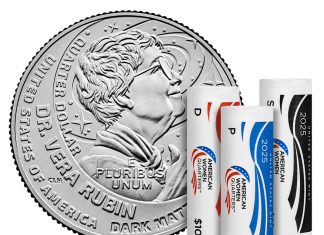 Gold, based on early indications, appears compelled to extend its rally and end above $1200 an ounce on Friday. That would seal 8-days of straight increases — the longest string of gains since November.
Gold, based on early indications, appears compelled to extend its rally and end above $1200 an ounce on Friday. That would seal 8-days of straight increases — the longest string of gains since November.
In the early going, Gold jumped as the dollar fell following weaker-than-expected U.S. jobs numbers.
U.S. gold futures for December delivery rallied to $1212.80 an ounce, registering an increase of $13.50 as of 10:32 AM Eastern Time.
Silver was $18.550 an ounce, surging 22.9 cents. Platinum was $8.80 higher to $1581.30 an ounce. Palladium was down $1.90 to $494.15 an ounce.
Following immediately is the daily metals commentary, compliments of Jon Nadler, senior analyst at Kitco Metals, Inc.:
Good Morning,
Most markets went into a state of suspended animation overnight as players awaited the release of US nonfarm payroll data due this morning. Thus, with caution on the front burner, there was not too much to report in the way of overnight market action. The Nikkei shed 11.80 points, the US dollar rose by 0.13 on the index, crude oil fell less than a quarter, and gold held steady near $1195.00 the ounce.
The US figures due this morning were expected to show a decline of about 60,000 positions for the month of July. However, the headline will be misleading as it primarily reflects the unwinding of census-related hiring earlier in the year. Analysts also anticipated that the private sector created somewhere between 70,000 and 100,000 jobs last month.
Thus, we have yet to see (on page 2 of this post) what exactly the markets will interpret as good news, and/or not-so-good news today. In the interim, it was reported that Canadian unemployment climbed a small fraction, reaching 8% and the data helped push the loonie a tad lower against the greenback this morning. Meanwhile, the good news/bad news routine was alive and well over in Europe, where reports that German industrial output fell unexpectedly, was countervailed by news that Spain’s economic growth picked up speed in Q2 as the country drags itself out of the worst contraction since the end of WWII.
This week’s overused keywords are "stress" and "tests." China rattled markets when it announced that its regulators are instructing lenders to run assumptions of an up to 60% drop in real estate values when the ‘stress-test’ their loan books. This morning, it was learned that the dry-run scenarios are being widened to include credit risk as it relates not only to housing but also to the cement and steel sectors and other related industries.
There may be more than just a concern for the health of lenders afoot in these changing Chinese trends.
The Financial Times opines that "justifiable or not, high house prices have caused immense public resentment, and as a result China’s leaders have of late been attempting to undo some of their own work. Over-expansionary monetary policy began to be withdrawn in the second half of 2009. Credit expansion was reined in. Policies to contain the fever of property development also followed. For the first time, both a property tax and a capital gains tax are under discussion."
The FT article, written by an academician, Mr. Yu Yongding, concludes with the following blunt and premonitory statement:
"China has concentrated obsessively on GDP growth for far too long. But growth is not a good excuse for postponing much-needed structural adjustment. This readjustment, when it comes, will inevitably lead to a slowdown. But it is the only way to lay a solid foundation for sustainable growth in the long run. And the longer the delay, the more painful the adjustment will be."
Apparently, the new penchant for stress-testing is suddenly becoming popular elsewhere as well. Taiwan’s regulators have asked their country’s lenders to factor in the consequences of a potential 25% drop in local real estate values. Mortgage curbs have been instituted in Taiwan following a near 12% year-on-year leap in property prices in June. We have yet to see other places (Hong Kong, Singapore, etc.) in Asia adopt the trend.
However, following the IMF’s warning in early June that real estate loans as a percentage of new bank lending showed some alarming spikes on bar graphs, the testing for property price decline-induced stress among lenders might not only be in vogue; it might be vital. Nobody in Asia, it would seem, would want a replay of the US & Europe banking blues festival on their local stages.
Precious metals prices opened on a mildly defensive note this morning as traders prepared for the US Labour Department data to be released. While gold has thus far failed to post a solid, above $1200 spot bid close, it still appears set for its first weekly gain since June 18. The yellow metal started the Friday session off with a $0.10 loss basis spot bid, quoted at $1194.80 per troy ounce.
Silver dropped 3 cents to open at $18.31 per ounce, while the noble metals retreated after their brief forays above key psychological levels earlier in the week. Platinum shed $5 to start at $1564.00 while palladium fell $9.00 per ounce to open at $487.00 this morning. Rhodium was down to $2130.00 after having lost $20 on Thursday and $20 this morning as well. In the background, the US dollar was steady-to-higher on the index, last quoted at 80.90 while crude oil fell 25 cents to $81.76 per barrel.
The echoes of China’s relaxing rules relating to gold import/exports and trading are still reverberating among the bulls; they have taken that bit of news and ran as far and as high as they could with it this week. Given the fact that it was the first positive external news item to come into the market since mid-June, it makes some sense. Given the fact that it was the only positive news (amid reports that ETFs lost gold, and that investors were siphoning funds over into other asset classes as risk appetite is rising), well, maybe, the story has been overplayed.
Also overplayed, was the anticipation of the US labour data. The wait is over. Let the speculating restart. The headline figure, not as expected, showed a decline in jobs totaling 131,000 last month. Somewhat buried in the data, the fact that US employers created 71,000 jobs in July. Private employment is a better gauge of the temperature reading of the jobs market, and it, in fact, was up by more than double the increase recorded in June. Initial reaction to the figures was more like an overreaction. Thank you, spec funds.
Ignoring the fact that the US economy is now in the (somewhat anemic but still rising) job-adding phase, and also the fact that unemployment remained at 9.5% as against the 9.6% level that had been anticipated, players apparently focused instead on the fact that only 11% of the more than 8 million lost jobs has been recouped. Stock futures slumped, the dollar fell a bit, and gold drove ahead by about $13 to $1209.00 the ounce. Where, oh where, will the metal finish this week? And, does it matter that $1200 might be recaptured when seen within the larger scheme of (wave-related) things? Contrarian investor David Banister thinks not. Catch his interview on TheStreet.com here.
Final item of the week: Food for weekend thought. The Washington Post reports that:
"In pledging to give away half their fortunes to worthwhile causes, 40 of the country’s billionaires have resurrected and updated Andrew Carnegie’s doctrine of the "gospel of wealth."
"[Academicians at] George Mason University suggest that the defining characteristic of American capitalism is not only an entrepreneurial culture that generates great wealth but also a philanthropic infrastructure that recycles that wealth in ways that create more opportunity, more growth and more wealth. This virtuous cycle, they concluded, is the "inner dynamic of American capitalism and the source of its prosperity." They contrast that to socialist countries, where philanthropy is weak and government takes on the recycling role, or less-developed countries, where oligarchs’ fortunes are not recycled at all."
Trickle down of a different ilk. Patriotism of a different kind. Thanks Mr. Buffett, thanks Mr. & Mrs. Gates.
Happy weekend.
Jon Nadler
Senior Analyst
Kitco Metals Inc.
North America
Original article link: Wealth redistributed. This time, for real.
www.kitco.comand www.kitco.cnBlog: http://www.kitco.com/ind/index.html#nadler
Editor’s Note: Meet the Kitco Team at the upcoming Kitco Metals eConference September 12-13, 2010. A not-to-be missed event featuring Ron Paul, Marc Faber and other industry heavyweights. The eConference is free with Pre- Registration www.kitcoeconf.com.
The United States Mint began issuing American Eagle Silver coins in 1986. To learn about the first silver versions, visit sister CoinNews site and read 1986 Silver Eagles.










